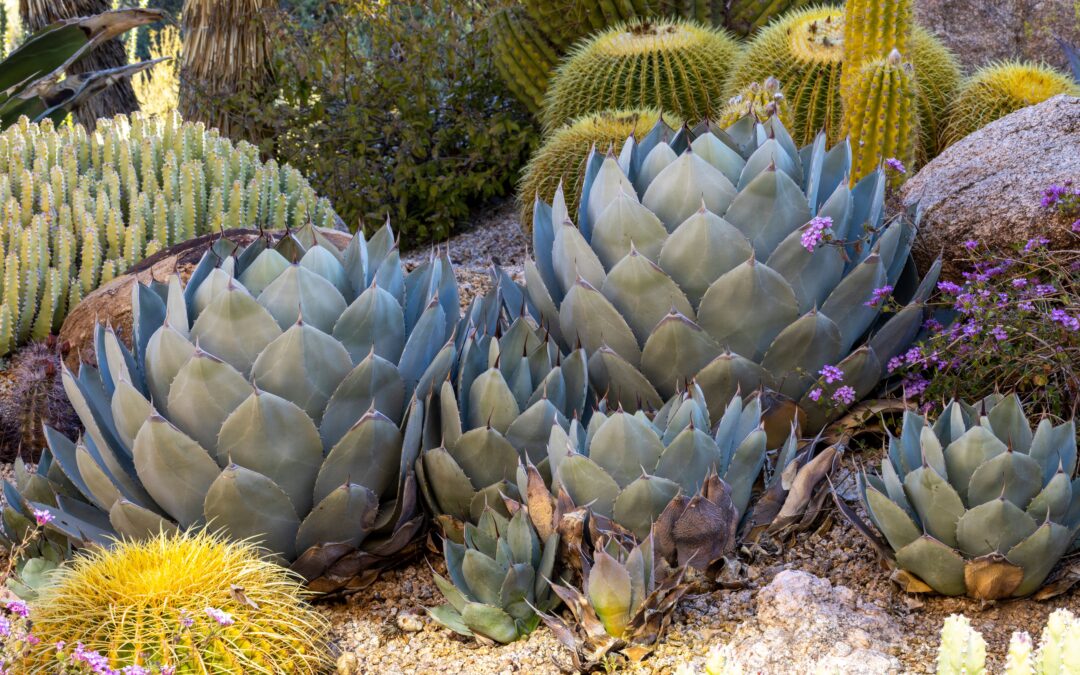While we’ve touched on the topic of watering your desert landscape in winter in our previous blog posts, it’s so important that it deserves its own blog. In this blog, we aim to equip you with essential tips to maintain your plants’ well-being throughout an Arizona winter. Without further delay, let’s delve into the crucial aspects of winter watering. Here’s three things you should know.
#1 A “Sewer Fee”
What’s a sewer fee you might ask? It’s a portion of your water bill you receive each month from your city of residence. Most cities recalculate this sewer fee based on a homeowner’s average water usage during winter months. Pro Tip: You can reduce next year’s sewer fee by cutting back on water during this winter season – which you should be doing anyway. Let’s get into why.
#2 Overwatering
Excessive watering poses a threat to desert-adapted plants, hindering their ability to thrive. Proper intervals between waterings allow plant roots to access vital nutrients from the soil. When the soil remains overly moist, plfants struggle to absorb essential elements like nitrogen and iron, leading to root suffocation, yellowing leaves, diminished health, and, in severe cases, plant demise.
Some shrubs and vines will grow rapidly when overwatered during winter, exposing their tender new tissue to colder temperatures, ultimately leading to frost damage.
#3 Frost Protection
Frost damage is often caused by winter overwatering of plants, and can be the cause of death for your plants. Cactus plants suffer less frost damage if they haven’t been watered for the months leading up to the cold. Cacti store water within their cells, and when this water freezes, it expands and causes the cells to rupture. This process can harm or even prove fatal to the plants.
During the winter months, it’s important to water your trees and plants deeply but less frequently. Desert-adapted trees and plants thrive when watered appropriately. A basic guideline is to water trees to a depth of 3 feet, shrubs to 2 feet, ground cover to 1 foot, and winter rye grass to a depth of half a foot. To measure the depth accurately, insert a soil probe or a sharpened dowel rod into the ground until you encounter resistance. This ensures your plants receive adequate moisture without overwatering.
Here are some frequently asked questions relating to winter watering of desert landscapes:
#1 How often should I water my desert plants during winter?
The frequency of winter watering depends on factors such as temperature, soil type, and plant species. As a general guideline, water deeply once every 2-4 weeks, allowing the soil to dry out between watering sessions.
#2 Should I adjust my catering schedule based on the weather?
Yes, if there’s rainfall, you can skip scheduled watering. Conversely, during dry spells or windy days, you might need to water more to compensate for any moisture loss.
#3 How can I tell if my plants are getting enough water?
Our number one tip is to monitor them frequently. Signs of underwatering include wilting, yellowing leaves, and dry, brittle foliage. Overwatering can also cause root rot, leading to wilting and yellowing as well.
#4 Can I use a drip irrigation system for winter watering on my desert landscape?
Yes, drip irrigation systems are an efficient way to water desert landscapes, even in winter. They deliver water directly to the plant’s root zone, minimizing water wastage and promoting healthier growth. Ensure the system is properly calibrated to meet the plants’ moisture needs.
#5 What’s the best time to water my landscape?
The best time to water your landscape is in the early mornings or at night. Our recommended time frame is from 5:00a.m. to 8:00a.m. and from 8:00 p.m. to 10:00p.m.
If you have additional questions about winter watering or wish to schedule maintenance services, please don’t hesitate to reach out to us at (480) 488-0128. We’re here to assist you.









